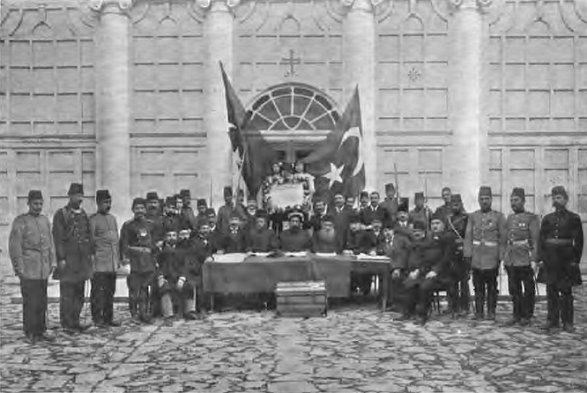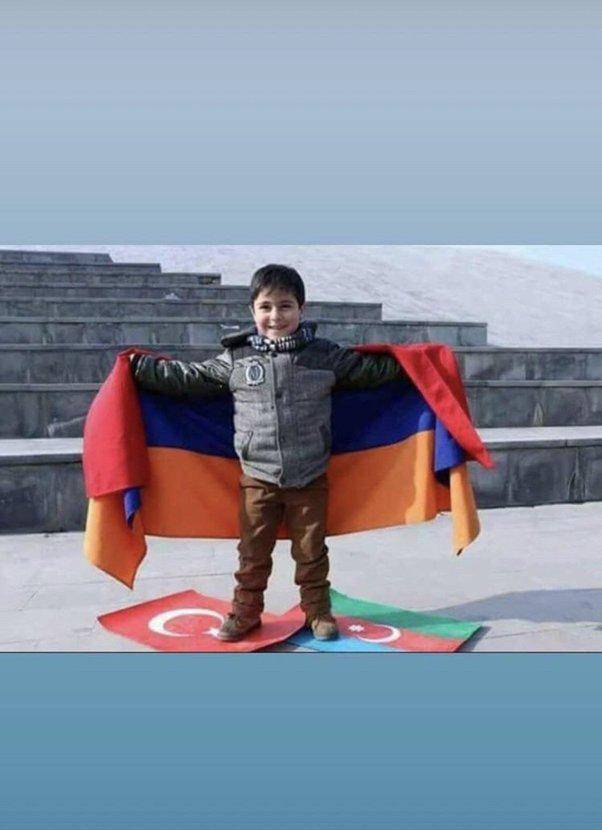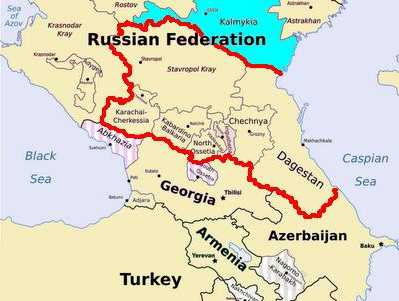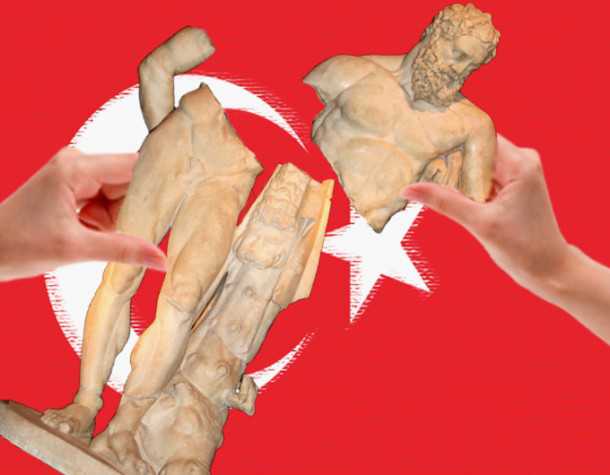BOOK REVIEW: The Image of an Ottoman City: Imperial Architecture and Urban Experience in Aleppo in the 16th and 17th Centuries
H-NET BOOK REVIEW
Published by H-Levant@h-net.msu.edu (July 2008)
Heghnar Zeitlian Watenpaugh. _The Image of an Ottoman City: Imperial Architecture and Urban Experience in Aleppo in the 16th and 17th Centuries_. Leiden and Boston: Brill, 2004. xxi + 278 pp. Glossary, illustrations, maps, notes, bibliography, index. $164.00 (cloth), ISBN 90-04-12454-3.
Reviewed for H-Levant by May Farhat, Department of Fine Arts and Art History, American University of Beirut
A City Reshaped
Heghnar Zeitlian Watenpaugh’s _The Image of an Ottoman City_ is an important contribution to the literature on the “non-western city.”[1] It explores the impact of Ottoman rule on the architectural and urban space of Aleppo over the course of the sixteenth and seventeenth centuries. The study’s overarching concern is with patterns of “Ottomanization,” that is, the processes by which Ottoman imperial power appropriated, transformed, reshaped, and represented Aleppo’s historically multilayered urban environment, imprinting it with a distinctively Ottoman signature.
In chapter 1, Watenpaugh positions herself within the disciplinary practices that have shaped the study of Ottoman cities. Eschewing the disciplinary divisions that placed Aleppo and Istanbul in separate fields of inquiry, circumscribed by national boundaries and nationalist ideologies (Arab vs. Turkish), her goal is to frame “Aleppo as an Ottoman city,” by placing it in its premodern Ottoman context (p. 5).
Central to the author’s thesis is the “metaphor of encounter,” or “interconnection,” which allows her to reconceive the relationship between the imperial center and provincial city, and to read architectural and urban production as a visual embodiment of that relationship (p. 8). Watenpaugh argues that the need to “Ottomanize” the former Mamluk territories must have compelled the architectural production of standardized forms that “would index Ottoman rule” (p. 9). She draws widely and expertly on local and imperial archival sources, and confidently builds on the work of the French school of research (Jean Sauvaget, Andre Raymond, and Jean-Claude David), Ottoman architectural and urban studies, (Ulku Bates, Cigdem Kafescioglu, Gulru Necipoglu, and Irene Bierman), and urban historians (Spiro Kostof, Henri Lefebvre, and Michel de Certeau).
Chapter 2 sets the scene by exploring Aleppo’s pre-Ottoman urban context. The author establishes that the pattern of patronage under the Mamluks changed markedly under the Ottomans. While wealthy local merchants joined Mamluk amirs and governors to participate in the process of shaping urban space, the patronage of powerful, Istanbul-appointed officials was most instrumental in the transformation of the city’s urban landscape during the first two centuries of Ottoman rule. Cognizant of Aleppo’s emerging preeminence as a hub for long distance trade in the empire, Ottoman officials invested heavily in Aleppo’s commercial infrastructure, radically changing the orientation of the city and creating a new urban center at the heart of the intra-mural city.
The Ottomans projected their influence into the former Mamluk cities by means of large endowed foundations (_awqaf_) that had an impact on urban, socioeconomic, political, and religious networks. In chapter 3, Watenpaugh exhaustively analyzes the patronage of the powerful Ottoman officials who reshaped Aleppo’s urban space into an Ottoman city during the sixteenth century. Between 1546 and 1580, successive governor-generals of Aleppo established four major endowments (_awqaf_). These were located along the old Roman east-west axis of the city, stretching between the Great Mosque and the Antioch Gate. The religious institutions at the center of these complexes introduced a distinctly Ottoman signature (”rumi” aesthetic), characterized by the domed prayer hall, pencil thin minarets, and spatial configurations that emphasized visibility (p. 73). These standardized forms, devised in the office of imperial architects in Istanbul, “shouldered the articulation of Ottoman hegemony” and permanently changed the skyline of the city (p. 120).
Watenpaugh argues that a different stylistic choice dictated the design of commercial structures (_khāns_), which were configured according to Mamluk models. Watenpaugh eschews the conventional view of two dichotomous styles, an imperial style introduced from Istanbul and a persistent local “tradition.” Instead, she argues that in these commercial structures, less symbolically charged than the mosque, an appropriation and Ottomanization of Mamluk forms took place, a point that she develops further in chapter 5. Contra to Sauvaget, who saw no evidence of concerted planning in the growth of the Ottoman city, Watenpaugh argues that the cumulative acts of patronage that contributed to the architecturally cohesive space of Aleppo’s urban center constituted a form of urban planning. One wishes, however, that the author had presented a more detailed analysis of the interplay between Mamluk typology, local building practices, and Ottoman visual idioms that contributed to the formation of that distinctive Aleppine urban language.
In chapters 4 and 5, Watenpaugh extends her examination of patterns of Ottomanization into the seventeenth century. Political instability at the turn of the sixteenth century, in conjunction with the slowing down of international commerce, introduced a rupture in the pattern of Ottoman patronage. The author briefly alludes to the political and social developments leading to this rupture. However, a more comprehensive exploration of the balance of power between the city and the imperial center would have done much to foreground her analysis of urban transformation. According to Watenpaugh, the shift from the patronage of large commercial complexes to the patronage of smaller religious establishments like Sufi lodges (_takiyyas_) underscored Ottoman officials’ attempts to co-opt the antinomian movements that were expanding and proliferating during this period. Visually, the _takiyyas_ are a disparate, architecturally hybrid group, and do not project a strong urban presence. While the author brings much needed attention to these religious institutions, her discussion of their architectural idioms remains inconclusive. The dearth of new commercial foundations during the seventeenth century is offset by the extra-muros commercial complex of Ipshir Pasha, which is distinguished by its incorporation of a magnificent coffee house. Although Ipshir Pasha was a notorious rebel, and thus one who may not be perceived as a willing agent of Ottomanization, Watenpaugh forcefully argues that by virtue of its endowment, established to support Islamic institutions and the protection of the _hajj_, Ipshir Pasha’s foundation remains–very much like the sixteenth-century foundations–a significant “artifact of empire” (p. 169).
In chapter 5, Watenpaugh moves the discussion to Ottoman renovation efforts, specifically the refurbishing of two of Aleppo’s oldest religious institutions–the Great Mosque and the Madrasa Hallāwiya. Subtle changes to the façades of these buildings are seen as a strategy to appropriate and Ottomanize the city’s past, a process that culminates in the façade of Khan al-Wazir, a commercial structure built within the city in the late seventeenth century. In her interpretation of two feline emblems that frame the gate of the _khān_, Watenpaugh deploys a compelling argument that a new visual idiom was created in the process of appropriating and recontextualizing Mamluk forms.
In her final chapter, Watenpaugh shifts her focus from the realm of architecture to that of book publishing, analyzing texts about cities that were produced in both Istanbul and Aleppo. Locally, the continued production of biographical dictionaries of Aleppine scholars underscores the presence of a strong urban identity. These texts, as the author observes, lack an “aesthetic awareness,” and do not explicitly expound on the spatial and formal qualities of the city’s architecture (p. 212).
In contrast, texts produced by Turkish-speaking Ottomans at the imperial center, like Matrakci Nassuh’s portrait of Aleppo and Evliya Celebi’s travelogue, represent Aleppo from the perspective of the imperial center, and thus reveal imperialist concerns and attitudes. In Nasuh’s painting, completed before the Ottoman transformation of the city in the sixteenth century, Aleppo’s cityscape is punctuated with recognizably Ottoman minarets featuring pencil-shaped tops and double balconies. As Watenpaugh suggests, Aleppo is not depicted as it is but how it ought to be. Celebi’s account displays a keen awareness of the city’s historical layering, one that privileges the Ottoman layer and highlights its Rumi style. By the end of the seventeenth century, Aleppo has been shaped in the image of an Ottoman city, as prefigured in Nasuh’s portrait.
Finally, Watenpaugh’s publisher, Brill, deserves criticism. The location of the figures and photographs at the end of the volume makes for an awkward reading experience; and the poor quality of the monochromatic photographs often fails to serve the author’s bold visual analysis.
Nevertheless, Watenpaugh’s sweeping account of Aleppo’s reshaping under Ottoman rule is thought provoking and groundbreaking. It offers insights into the working of imperial power in the production of urban space and the staging of public architecture in a provincial center. It is indispensable reading for all those concerned with Ottoman and Mediterranean urban history in the early modern period.
Note
[1]. See Zeyneb Celik, “New Approaches to the ‘Non-Western’ City,” _Journal of the Society of Architectural Historians_ 58 (September 1999), 374-381.





